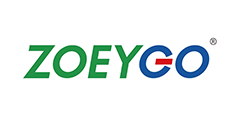Bidirectional DC-DC Converter: A Versatile Power Conversion Solution

In recent years, renewable energy sources such as solar panels and wind turbines have become increasingly popular due to the growing concern over climate change and the depletion of fossil fuels. However, these sources of energy are often intermittent and require energy storage systems to ensure a reliable and constant supply of electricity. Bidirectional DC-DC Converters have emerged as a versatile and efficient solution for energy storage and power conversion in renewable energy systems.
A bidirectional DC-DC converter is a power electronic device that converts DC power from one voltage level to another, while also allowing power to flow in both directions. This means that it can charge a battery or energy storage system by converting power from a solar panel or wind turbine, and then discharge the energy back to the grid when needed. Bidirectional DC-DC converters are also used in electric vehicles to enable power flow between the battery and the motor.
The advantages of bidirectional DC-DC converters include high efficiency, fast response time, and the ability to operate over a wide range of voltages and currents. These devices can also be configured to operate in parallel for higher power applications. Bidirectional DC-DC converters can be designed with various topologies such as buck-boost, full-bridge, half-bridge, and flyback to meet different system requirements.
One of the main applications of bidirectional DC-DC converters is in hybrid renewable energy systems. These systems combine multiple renewable energy sources, such as solar panels and wind turbines, to provide a more stable and reliable energy supply. Bidirectional DC-DC converters are used to manage the energy flow between the different sources and the energy storage system. This allows for efficient use of the available energy and reduces the need for backup generators.
Bidirectional DC-DC converters are also used in electric vehicles to control the power flow between the battery and the motor. The converter can either charge the battery from the motor or provide power to the motor from the battery. This allows for regenerative braking, where the energy from the motor is used to charge the battery and improves the overall efficiency of the vehicle.

Fig.1
In addition to renewable energy and electric vehicles, bidirectional DC-DC converters have numerous other applications such as energy storage systems, uninterruptible power supplies, and industrial automation systems. These devices are also becoming more popular in the telecom industry, where they are used to power remote base stations and telecom towers.
In conclusion, bidirectional DC-DC converters are a versatile and efficient solution for power conversion and energy storage in renewable energy systems, electric vehicles, and many other applications. Their ability to convert power in both directions, high efficiency, and wide range of operating voltages and currents make them an essential component in modern power electronics. As the demand for renewable energy and electric vehicles continues to grow, bidirectional DC-DC converters will play an increasingly important role in the transition to a more sustainable future.
- +1 Like
- Add to Favorites
Recommend
- Bidirectional DC-DC Converter: A Two-Way Power Conversion Solution
- Bidirectional DC-DC Converter: A Comprehensive Guide
- Bidirectional DC-DC Converter: A Guide for Power Conversion in Both Directions
- Design and Analysis of a Bidirectional DC-DC Converter for Energy Storage Systems
- Design and Analysis of a Bidirectional DC-DC Converter for Power Electronics Applications
- Bidirectional DC-DC Converter: An Efficient Solution for Power Conversion
- Bidirectional DC-DC Converter: Efficient Power Conversion in Both Directions
- Design and Analysis of Bidirectional DC-DC Converter for Efficient Power Conversion
This document is provided by Sekorm Platform for VIP exclusive service. The copyright is owned by Sekorm. Without authorization, any medias, websites or individual are not allowed to reprint. When authorizing the reprint, the link of www.sekorm.com must be indicated.





























































































































































































































































































































































































































































































































































































































































































































































































































































































